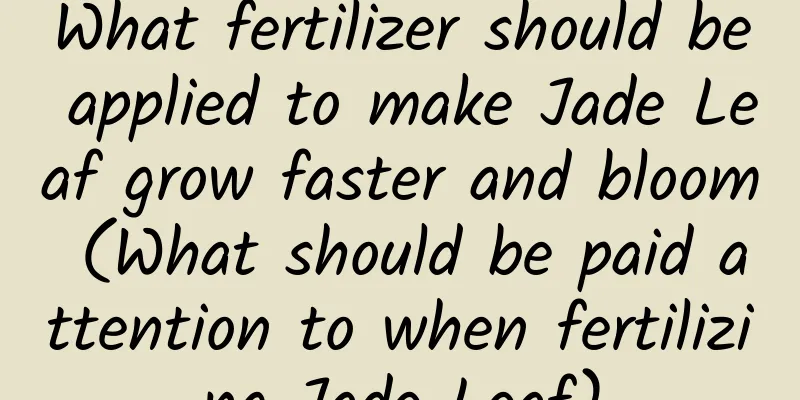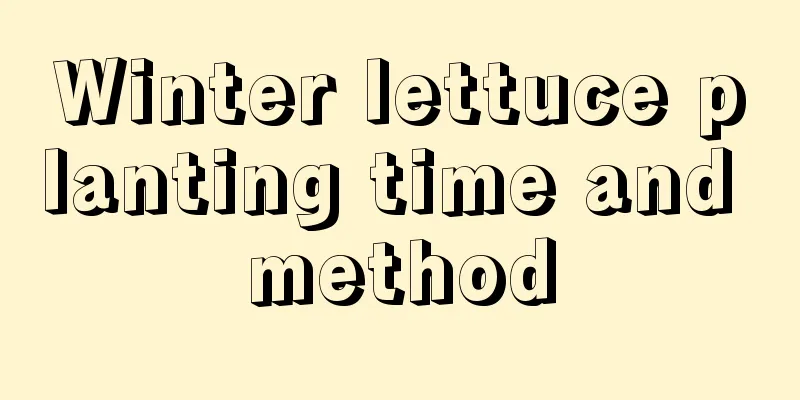What fertilizer should be applied to make Jade Leaf grow faster and bloom (What should be paid attention to when fertilizing Jade Leaf)

What fertilizer is good for Jade Leaf?Although the Jade Plant does not need much fertilizer and is relatively tolerant to barrenness, it will grow well with little or no fertilizer. However, if we want to grow the Jade Plant well, we must first provide it with good soil, and then keep up with the fertilization. (1) Nutrient soilFertilizing the Jade Plant to supplement nutrients also starts from the soil. When mixing the planting material, you can mix the garden soil + humus soil + freshwater river sand + perlite in a ratio of 3:3:3:1 to make the planting soil. This kind of flower soil is not easy to compact, has good air permeability and water permeability, and contains light nutrients. (2) Base fertilizerThe germination ability of Jade Plant is relatively strong. When planting, burying organic fertilizer at the bottom of the soil can provide sufficient nutrients for a long time to promote growth. Organic fertilizer is recommended to use "fermented sheep dung balls" mixed with one-third of river sand particles, and buried in the flower pot. Then cover with a thin layer of sand before planting. (3) TopdressingIt is not recommended to apply fertilizer in the first year of planting Jade Plant. After the second year, the nutrients in the soil and the base fertilizer are almost consumed, so we need to apply topdressing. It is recommended to use organic fertilizer for topdressing: 1. Organic fertilizer solid fertilizer The use of solid organic fertilizer is rather complicated. You need to loosen the soil by digging a few small holes on the surface of the flower soil, and then bury the "fermented sheep dung balls" shallowly in the shallow layer of the flower soil by burying them in holes. The small hole for burying organic fertilizer is close to the edge of the flower pot, away from the top of the Jade Plant. Be careful not to damage the roots when digging the hole. Once a month. 2. Organic fertilizer water The use of organic fertilizer water is relatively simple. First, collect the rice water and put it in an oil barrel, then leave it idle for about 15 days. When using it, dilute it with 2 to 3 times the amount of water and directly pour it on the flower soil. Water it thoroughly until water seeps out from the bottom of the flowerpot. Once a month, and in spring and autumn during the peak growth period, fertilize once every half a month. (4) Foliar fertilizationFoliar fertilization is also called foliar fertilizer. We know that "nitrogen, phosphorus and potassium" are indispensable in the growth process of plants. "Nitrogen" can promote the growth of branches and leaves, and "phosphorus and potassium" can promote the growth of roots and improve the disease resistance of plants. When fertilizing the Jade Plant, you can use 600 times the nitrogen-rich urea solution for foliar fertilization to supplement nitrogen fertilizer. You can use 1200 times the "potassium dihydrogen phosphate" solution for foliar spraying to supplement "phosphorus and potassium" fertilizer. |
>>: What fertilizer is best for cactus (what fertilizer makes cactus grow faster)
Recommend
How many years does the jujube tree bear fruit?
Introduction to Planting Jujube Trees Red dates l...
Long-lived Clivia... 30 flowers bloom in a row in summer, why don’t her flowers go dormant!
Clivia The flowering period of Clivia is concentr...
How to reproduce pineapple
Sucker propagation The first is to divide the bud...
How to prune the double happiness vine
1. Pruning after cuttings of Shuangxi vine The en...
The efficacy and function of loquat
1. Helps lose weight Loquat is rich in crude fibe...
How to water peonies in spring
1. How to water Peony is a drought-tolerant plant...
How to grow pineapple heads hydroponically
1. Processing pineapple head Prepare a clean kitc...
What flowers are suitable for growing in Dali? What are the city flowers and trees?
1. Dali's Climate Characteristics Dali has a ...
How to change the soil for plum bonsai
1. Time Selection When changing the soil, you mus...
What are the breeding methods and precautions for Green Treasure?
Green treasure breeding method Green Treasure bel...
The flowering of "Chlorophytum" means "good luck", let's see why the Chlorophytum in your home is not blooming?
If spider plants bloom, it means that the environ...
What fertilizer to use for Chlorophytum comosum
1. Potassium and phosphorus Potassium and phospho...
How to water Lithops in summer
Lithops watering principles in summer When wateri...
Do vegetables need watering every day?
Do you water your vegetables every day? Vegetable...
Can azalea be fertilized in winter? Will it fall leaves when the fertilizer is too concentrated?
1. Is it possible to apply fertilizer? After ente...









